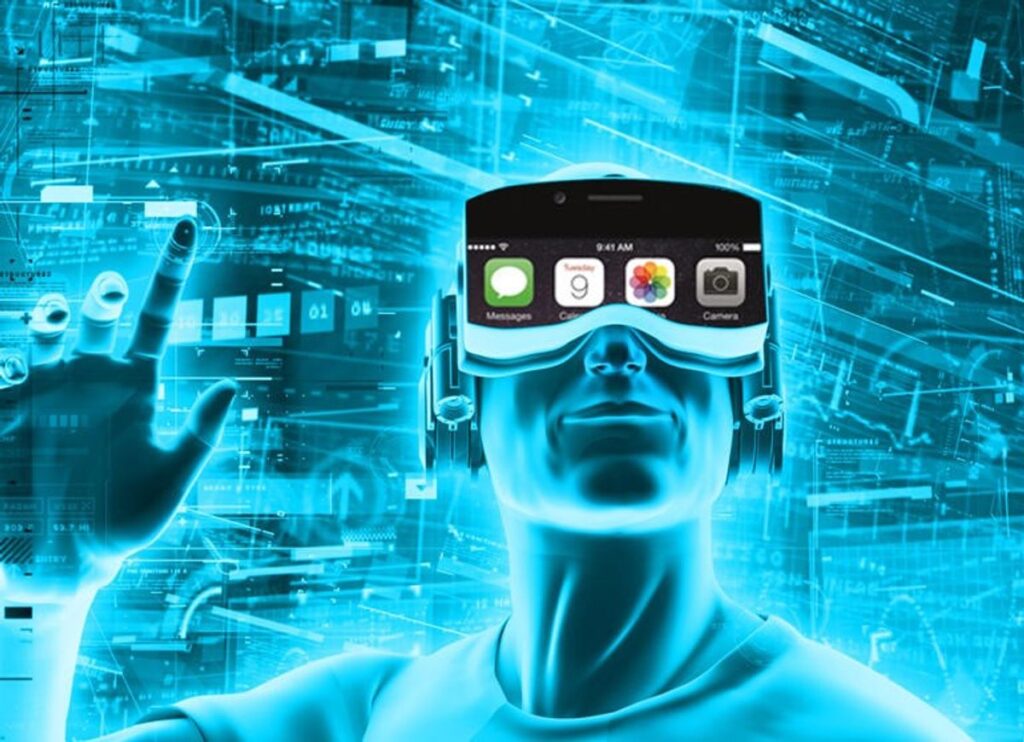The eyewear industry is undergoing a significant transformation with the advent of virtual frame fitting technology. This innovation is changing the way consumers shop for glasses, offering a seamless and personalized experience from the comfort of their own devices. Virtual try-on technology, powered by augmented reality (AR) and virtual reality (VR), is not only enhancing the shopping experience but also contributing to sustainability efforts by reducing waste associated with physical samples. This article explores the evolution, customer experience, environmental impact, and future implications of virtual frame fitting in the fashion retail sector.
Key Takeaways
- Virtual frame fitting is revolutionizing the eyewear shopping experience by enabling consumers to try on glasses virtually using AR/VR technologies.
- Fashion brands like Gucci and Balenciaga are pioneering the use of virtual try-on experiences, integrating them into e-commerce platforms and exploring digital fashion in the metaverse.
- Virtual fitting technologies contribute to environmental sustainability by reducing the production waste associated with traditional fitting processes.
- The development of VR applications for fashion designers and retailers is expanding the boundaries of garment design and showcasing, offering immersive experiences.
- Market predictions indicate a growing consumer interest in lightweight and stylish AR glasses, with potential for AR/VR use in retail environments beyond the home.
The Evolution of Virtual Frame Fitting in Fashion Retail
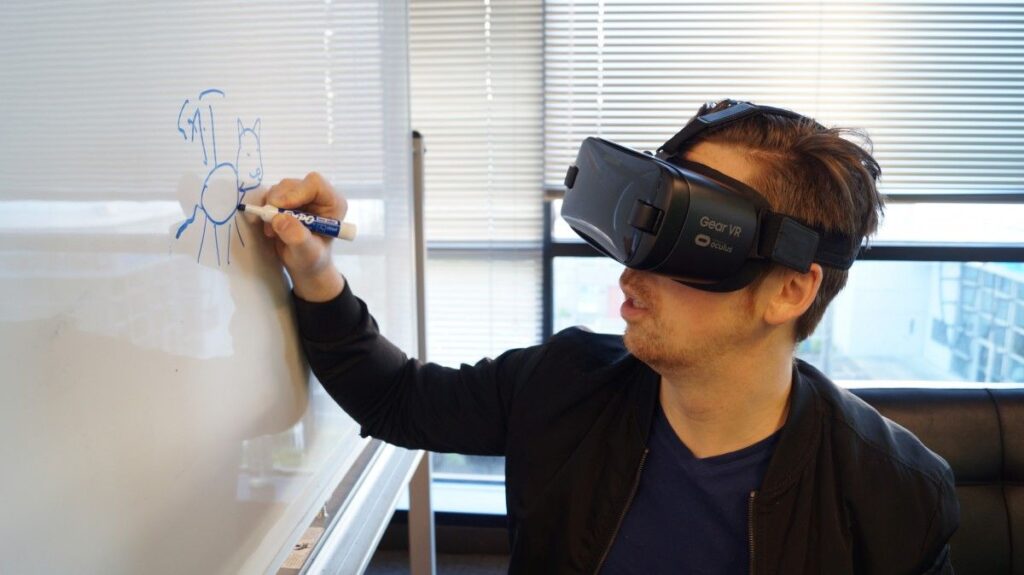
From Physical Stores to Digital Showrooms
The transition from physical stores to digital showrooms marks a significant shift in the fashion retail landscape. As consumers increasingly seek convenience and personalization, the eyewear industry has embraced virtual try-on technology, leading to more enjoyable and efficient purchase journeys. This shift is not without its challenges, as brick-and-mortar retail must innovate to keep pace with the digital transformation.
The integration of augmented reality (AR) and artificial intelligence (AI) has revolutionized the way consumers interact with eyewear products. Virtual fitting rooms powered by AR allow customers to try on glasses from the comfort of their homes, while AI enhances the experience by providing personalized recommendations and size adjustments. These advancements have not only improved customer satisfaction but also reduced returns, creating a more sustainable business model.
The seamless blend of technology and fashion retail is reshaping consumer expectations, setting a new standard for the shopping experience.
Despite the rise of digital solutions, in-store retail is finding its niche by offering unique, tailored experiences. Augmented reality is just one of the tools enhancing the in-store journey, providing a multi-faceted experience that goes beyond traditional shopping. Innovations like Uniqlo’s T-shirt design station and Nike’s accessible product information are examples of how physical stores are adapting to maintain customer loyalty.
The Rise of AR/VR in the Fashion Industry
The fashion industry’s initial hesitation towards AR/VR technologies is giving way to a burgeoning acceptance. The integration of AR/VR is transforming the retail experience, offering customers a new way to engage with fashion items before purchase. This shift is driven by advancements in 3D design software and a growing body of research underscoring the potential of these technologies.
Recent studies have highlighted the effectiveness of AR/VR in creating virtual dressing rooms and enhancing the shopping experience. For instance, virtual try-on apps allow for real-time simulation of 3D clothes, providing a glimpse into the future of fashion retail.
The immersive digital garment showcase is redefining the boundaries of traditional garment design and presentation, offering a new realm of possibilities for designers and retailers.
The table below outlines the key contributions from recent research in the field:
As these technologies mature, we can expect to see a more widespread adoption within the fashion industry, leading to a revolution in how consumers interact with fashion brands.
Case Studies: Gucci and Balenciaga’s Digital Foray
Luxury fashion houses Gucci and Balenciaga have pioneered the integration of virtual try-on experiences, setting a new standard in digital retail. Gucci’s AR technology allows customers to try on watches, shoes, and eyewear virtually, providing a glimpse into the future of shopping. Balenciaga has taken it a step further by selling digital fashion items in the metaverse, blurring the lines between physical and digital fashion realms.
The impact of these innovations is twofold: enhancing the consumer experience and promoting sustainability. By reducing the need for physical samples and in-person fittings, these brands are cutting down on waste and emissions associated with traditional production methods.
The seamless integration of virtual try-on technology with e-commerce platforms exemplifies the potential of AR in fashion retail. It’s not just about trying on a product; it’s about experiencing the brand in a whole new way.
The table below showcases a comparison of virtual try-on services offered by various brands, highlighting the diverse applications of AR technology in fashion retail:
Enhancing the Customer Experience with Virtual Try-On Technology
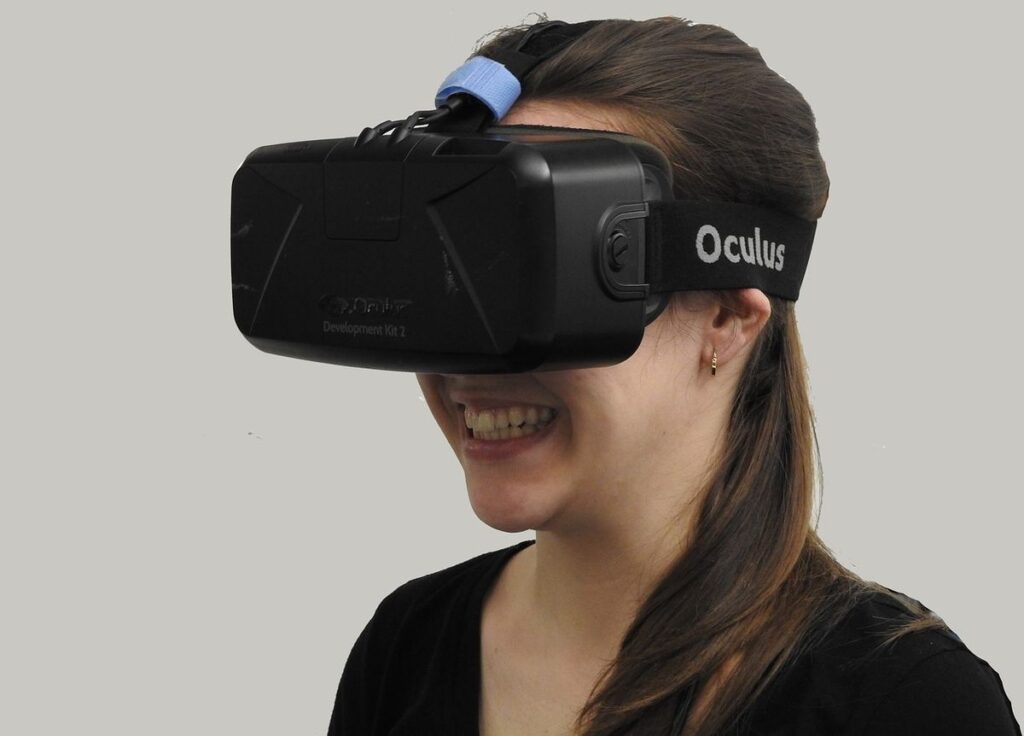
Real-Time Simulation and Size Recommendations
The advent of virtual try-on technology is transforming the eyewear industry, offering customers the ability to try on glasses in real-time through their devices. This technology not only enhances the shopping experience but also provides accurate size recommendations, ensuring a perfect fit without the need for physical trials.
Key benefits of real-time simulation include:
- Immediate visualization of how frames look on the wearer
- Adjustments and comparisons can be made instantly
- Size recommendations based on facial measurements
The integration of real-time simulation with size recommendations has led to a more efficient and satisfying shopping journey, with users able to make informed decisions from the comfort of their own homes.
The technology leverages advanced algorithms and facial recognition to offer personalized experiences that align with individual preferences and features. As a result, consumers enjoy a seamless and interactive fitting process, while brands gain valuable insights into customer behavior and preferences.
Integrating Virtual Fitting with E-Commerce Platforms
The integration of virtual fitting technology with e-commerce platforms has become a game-changer in the fashion retail industry. E-commerce websites are now equipped with virtual try-on features, allowing customers to visualize how eyewear would look on them before making a purchase. This seamless integration encourages a more interactive shopping experience and can lead to higher conversion rates.
- Lenskart has been at the forefront of this innovation, offering virtual try-ons, personalized recommendations, and sustainable practices.
- Virtual fitting tools are also being used to provide size recommendations, ensuring a better fit and reducing the likelihood of returns.
The convenience of virtual fitting is transforming the way consumers shop for eyewear, making it a more personalized and engaging process.
The adoption of these technologies not only caters to the tech-savvy shopper but also addresses the needs of those who value convenience and personalization. As virtual fitting becomes more sophisticated, it is expected to become a standard feature across online fashion retail platforms.
The Role of Mobile Apps in Fashion Retail
The integration of mobile apps in fashion retail has been a game-changer for the industry. Mobile apps have become the bridge between virtual fitting technology and everyday consumers, allowing for an unprecedented level of convenience and personalization. With a simple tap on their smartphones, users can now try on various eyewear styles from the comfort of their own homes.
The seamless connection between virtual try-on technology and mobile apps has not only streamlined the shopping process but also opened up new avenues for customer engagement and brand loyalty.
The functionality of these apps extends beyond mere visualization; they offer real-time simulation, size recommendations, and even the ability to customize products. This has led to a more interactive and satisfying shopping experience, as evidenced by the growing number of fashion companies incorporating virtual try-on features into their e-commerce platforms and mobile offerings.
Here’s a look at some of the key benefits provided by mobile apps in fashion retail:
- Personalization: Tailoring the shopping experience to individual preferences.
- Convenience: Trying on and purchasing products without the need to visit a physical store.
- Engagement: Encouraging interaction with the brand through innovative features.
- Data Insights: Collecting valuable customer data to improve product offerings and marketing strategies.
Sustainability and Efficiency: The Environmental Impact of Virtual Fitting
Reducing Waste in Fashion Production
The fashion industry is witnessing a paradigm shift towards sustainability and efficiency. The integration of 3D design software is a game-changer, significantly reducing fabric waste by eliminating the need for physical samples. This not only streamlines the production workflow but also cuts down on carbon emissions.
The adoption of virtual fitting technologies is not just a trend; it’s a commitment to a greener future. By minimizing wasteful processes, the industry is taking a bold step towards environmental responsibility.
Moreover, the impact of these technologies extends to the consumer level. Virtual fitting tools offer size recommendations and customization options, leading to fewer returns and a more sustainable market model. Retailers are also exploring in-store recycling initiatives, although the success of such programs often requires government intervention to improve accessibility and accountability.
The Shift Towards Digital Fashion Items
The fashion industry’s pivot to digital fashion items marks a significant step towards sustainability and innovation. Brands like Gucci and Balenciaga are leading the charge, offering virtual try-on experiences and selling digital fashion items in the metaverse. This shift not only enhances the shopping experience but also addresses the environmental concerns associated with traditional fashion production.
The integration of 3D design software in the garment production workflow is revolutionizing the industry. By eliminating the need for physical samples, this technology reduces fabric waste and carbon emissions, contributing to a more sustainable fashion ecosystem.
The adoption of digital fashion extends beyond retail into the realms of gaming and entertainment, where the demand for high-quality clothing animations and simulations is paramount. The following list highlights the key benefits of this digital transformation:
- Reduction of fabric waste and carbon emissions
- Swift sharing of designs and prototypes
- Enhanced consumer engagement through immersive experiences
- Potential for new revenue streams in digital spaces
As we continue to witness the evolution of digital fashion, it’s clear that the industry is moving towards a more efficient and environmentally conscious model.
Consumer Behavior and Environmental Consciousness
The intersection of consumer behavior and environmental consciousness is becoming increasingly significant in the fashion industry. Consumers are demanding greater transparency in the products they purchase, and this is particularly true for eyewear. The integration of scannable QR codes on product labels is a step towards this transparency, offering insights into the manufacturing process, environmental impact, and disposal instructions.
Retailers are responding to this shift by implementing in-store recycling initiatives. Brands like H&M and TK Maxx are leading the way, although the complexity of textile recycling suggests that more robust government intervention may be necessary to streamline the process. Retailers that proactively engage in such practices are building trust with their customer base, aligning with the values of a more environmentally conscious shopper.
The synergy between consumer expectations and retailer sustainability efforts is shaping a new retail paradigm, where informed choices and environmental stewardship are becoming the norm.
The following table highlights key consumer trends that are influencing the market:
The Future of Fashion Design: Immersive Virtual Garment Fitting
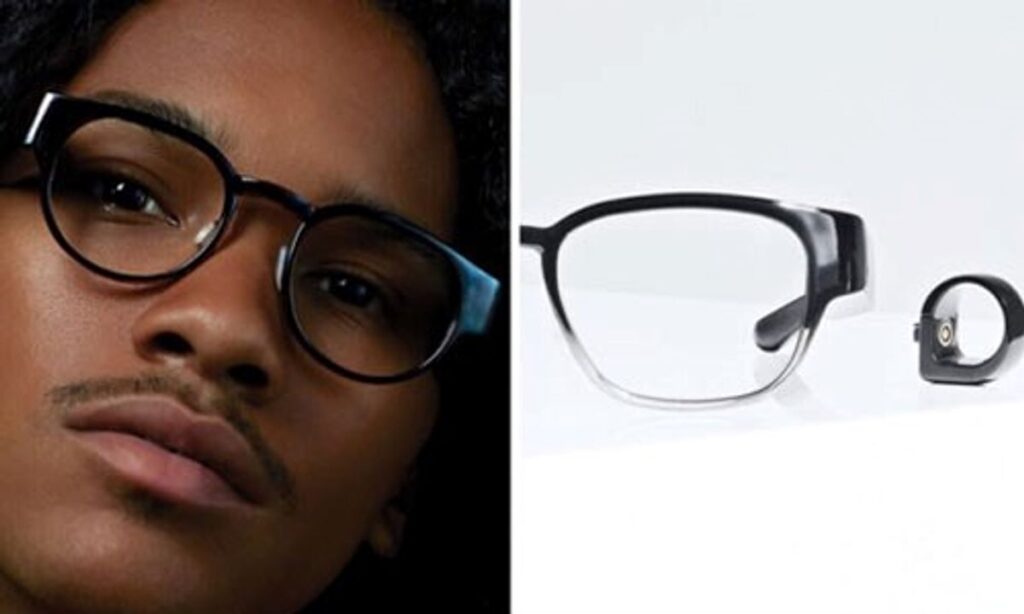
VR Applications for Designers and Retailers
The advent of VR applications in the fashion industry is not just a leap forward for consumers, but a revolutionary tool for designers and retailers. VR Designer is a desktop application that has become indispensable for professionals in the field. It enables them to visualize and interact with garments on various avatars, providing a comprehensive understanding of how clothing fits and moves on different body types.
- Real-time visualization of garments on avatars
- Dynamic interaction with clothing through static and dynamic poses
- Enhanced ability to inspect and evaluate garment fit and design
The immersive nature of VR applications allows for an unprecedented level of detail and realism in garment presentation, which is crucial for the decision-making process in design and retail.
Furthermore, these applications are not limited to design visualization. They can simulate virtual runway shows, offering a new dimension to fashion presentations. The VR environment, created with sophisticated 3D graphics, ensures high-quality realism that is essential for designers to assess their creations before they reach the production stage.
The Digital Garment Showcase Experience
The advent of immersive virtual garment fitting has opened new horizons for fashion designers and retailers. The VR Designer application is a game-changer, allowing for an interactive digital garment showcase that mirrors the intricacies of real-life clothing. Designers can now navigate a virtual retail space, engaging with a variety of avatar-garment combinations and viewing garments from multiple angles.
Participants in VR garment fitting sessions have reported high satisfaction with the experience, noting the precise representation of details such as pleats and zippers. The quality and accuracy of digital garments have been praised, with users affirming that the VR environment offers a comparable experience to inspecting garments in reality.
The significance of the VR Designer application lies in its ability to provide a valuable tool for sharing and examining fashion, enhancing the overall design and retail process.
The table below reflects user feedback on the perceived accuracy of digital garments within the VR environment:
Innovations in Avatar-Garment Combinations
The integration of high-quality garment-avatar simulations has marked a significant milestone in virtual eyewear fitting technology. Designers now have the ability to create and animate garments tailored to a variety of body types, allowing for a more personalized and immersive shopping experience. This innovation not only enhances the customer’s engagement but also paves the way for a revolutionized retail landscape.
The seamless combination of avatars, garments, and animations enables consumers to visualize how a garment would fit and behave on a real-size body, providing a profound understanding of the product before purchase.
The user interface (UI) for these simulations is designed for ease of use and interactivity. For example:
- Avatar Selection: Choose from different body types.
- Garment Display: View available garments for each avatar.
- Animation Control: Select and adjust animations to see the garment in action.
This level of detail in virtual fitting allows for a meticulous examination of the garment’s properties, such as drapes and wrinkles, offering a glimpse into the future of fashion retail where digital showcases may become the norm.
Market Predictions and Consumer Trends in Virtual Reality Eyewear
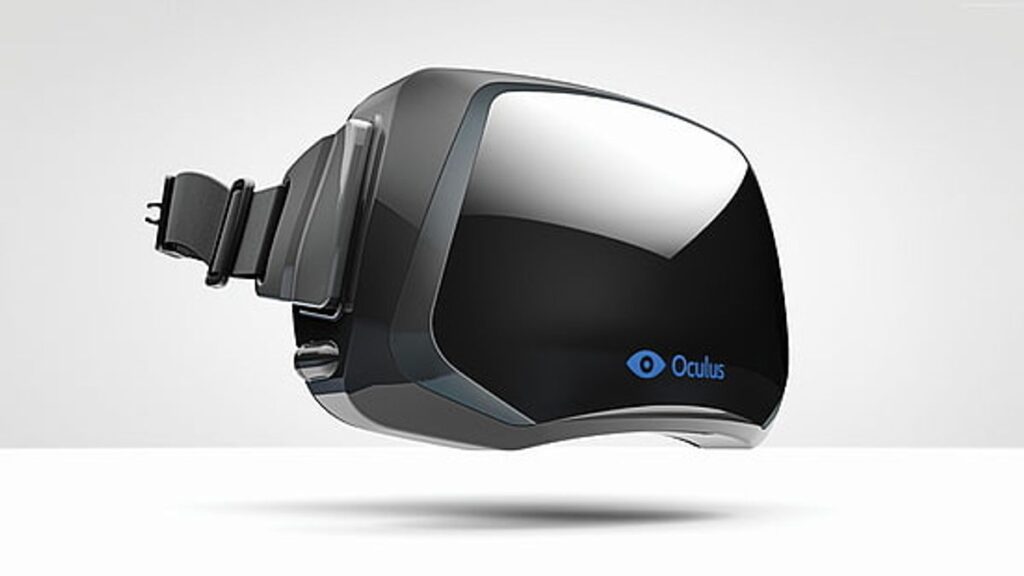
The Five-Year Outlook for VR and AR in Retail
The eyewear industry is evolving with the intersection of fashion, technology, and health, leading to a transformative retail experience. Over the next five years, we anticipate a significant shift towards the integration of AR and VR in retail spaces. Consumers are increasingly becoming more open to the idea of lightweight and stylish glasses, preferring these over cumbersome headsets or app-based experiences.
The retail landscape is set to embrace AR and VR technologies not just as a novelty, but as a core component of the shopping experience. This will be particularly evident in the way customers interact with products, both in-store and online.
The potential for AR to keep in-store retail afloat is substantial. Tailored experiences that merge immersive technology with personal shopping are predicted to become the norm. Moreover, AR could make shopping more comfortable and accessible for all, with applications like live language translations and live captions for those with hearing loss.
Here’s a glimpse of what we can expect:
- A rise in AR fitting room mirrors and furniture visualizations.
- Enhanced in-store experiences with sophisticated AR/VR integrations.
- Greater emphasis on biometric integration for a personalized fit and style.
As we look towards the horizon, it’s clear that the fusion of AR/VR with retail will redefine the boundaries of fashion and technology, creating a seamless and engaging consumer journey.
Consumer Preferences for Lightweight and Stylish AR Glasses
As the market for virtual reality (VR) and augmented reality (AR) eyewear evolves, consumer preferences are increasingly leaning towards options that blend functionality with fashion. The demand for lightweight and stylish AR glasses is on the rise, as users seek a seamless and comfortable experience that complements their personal style.
The integration of AR technology into eyewear is a game-changer, allowing users to interact with digital content without the bulkiness of traditional headsets.
The following points highlight key consumer expectations:
- Aesthetically pleasing designs that can be worn comfortably for extended periods.
- Minimalist frames that do not compromise on the quality of the AR experience.
- Versatility in styles to cater to diverse fashion tastes.
- Advanced features such as adaptive lenses and intuitive controls.
This shift in consumer preferences is shaping the future of AR eyewear, steering the industry towards more innovative and wearable solutions.
The Potential of AR/VR Outside the Home Environment
The potential of AR/VR technology extends far beyond the confines of our homes. As consumers become more open to the idea of lightweight and stylish glasses, the integration of AR into everyday life is becoming increasingly feasible. Fitness tracking eyewear, for instance, is already monitoring health metrics, while voice-activated commands are making technology more accessible to a wider audience.
In the retail space, AR is poised to transform the shopping experience. Imagine live language translations and captions for those with hearing impairments, or the convenience of AR fitting room mirrors. These applications not only enhance the user experience but also promote inclusivity.
The versatility of AR/VR is setting new standards for quality and interaction in the eyewear industry. Innovative materials and manufacturing processes are revolutionizing the sector, paving the way for a future where digital integration is seamless and ubiquitous.
Looking ahead, the adoption of AR/VR in retail environments outside the home is likely to grow. Our research indicates a strong consumer interest in these technologies for their potential to enrich the shopping experience without the need to invest in expensive personal devices.
As we delve into the latest market predictions and consumer trends in virtual reality eyewear, it’s clear that innovation is accelerating at an unprecedented pace. To stay ahead of the curve and get in-depth insights into the evolving landscape of VR technology, visit our website. We provide comprehensive analysis and expert commentary that can help you make informed decisions. Don’t miss out on the opportunity to be at the forefront of the virtual reality revolution. Click here to explore our findings and join the OPTIGRID community today!
Embracing the Virtual Fitting Revolution
The integration of virtual frame fitting into the eyewear shopping experience marks a significant leap forward in retail innovation. As we have seen, the fashion industry, including eyewear brands, is rapidly adopting AR/VR technologies to offer customers a seamless and interactive try-on experience. This not only streamlines the shopping process but also opens up new possibilities for customization and personalization, catering to the evolving consumer demands. With environmental benefits and the potential to revolutionize the way we interact with fashion, virtual fitting is poised to become a mainstay in the future of retail. As technology advances and consumer acceptance grows, we can expect virtual frame fitting to further enhance and transform the eyewear shopping experience, making it more efficient, enjoyable, and accessible than ever before.
Frequently Asked Questions
How is virtual frame fitting changing the eyewear shopping experience?
Virtual frame fitting is revolutionizing the eyewear shopping experience by allowing customers to try on glasses virtually using AR/VR technologies. This can be done from the comfort of their own home using a smartphone or computer, enhancing convenience and providing real-time simulation, size recommendations, and a personalized shopping experience.
What impact does virtual try-on technology have on the fashion industry?
Virtual try-on technology is having a significant impact on the fashion industry by reducing the need for physical samples, thus lowering production waste. It also offers customers a new way to engage with fashion brands, as seen with companies like Gucci and Balenciaga, who are incorporating virtual try-ons and selling digital fashion items in the metaverse.
Which fashion brands are leading the way in virtual try-on apps?
Fashion brands such as Converse, GAP, Lacoste, Gucci, Tiffany & Co., RayBan, Adidas, Nike, and Crocs are leading the way in virtual try-on apps, often integrating these features into their e-commerce platforms and mobile applications to enhance the customer shopping experience.
What are the environmental benefits of virtual fitting rooms?
Virtual fitting rooms contribute to sustainability by reducing the amount of physical samples and prototypes needed, thereby decreasing material waste and the carbon footprint associated with the production and transportation of fashion items.
How are virtual reality applications benefiting fashion designers and retailers?
Virtual reality applications are benefiting fashion designers and retailers by providing immersive environments where they can showcase and explore garment designs with avatar-garment combinations. This allows for a more interactive and detailed presentation of clothing items, which can enhance the design and retail process.
What does the future hold for AR/VR technology in retail?
The future of AR/VR technology in retail looks promising, with predictions that it will become a pivotal part of the shopping experience. Consumers are expected to show a preference for lightweight and stylish AR glasses, and there is potential for AR/VR to be used outside the home environment, making it more accessible and convenient for users.

I am a seasoned software engineer with over two decades of experience and a deep-rooted background in the optical industry, thanks to a family business. Driven by a passion for developing impactful software solutions, I pride myself on being a dedicated problem solver who strives to transform challenges into opportunities for innovation.

